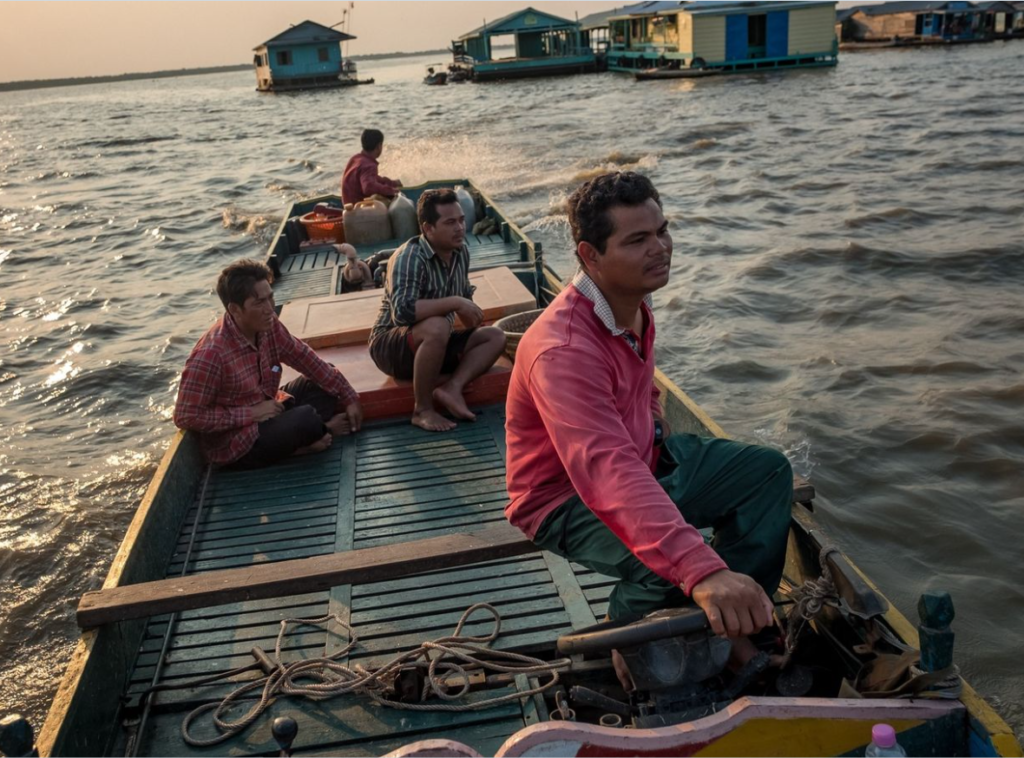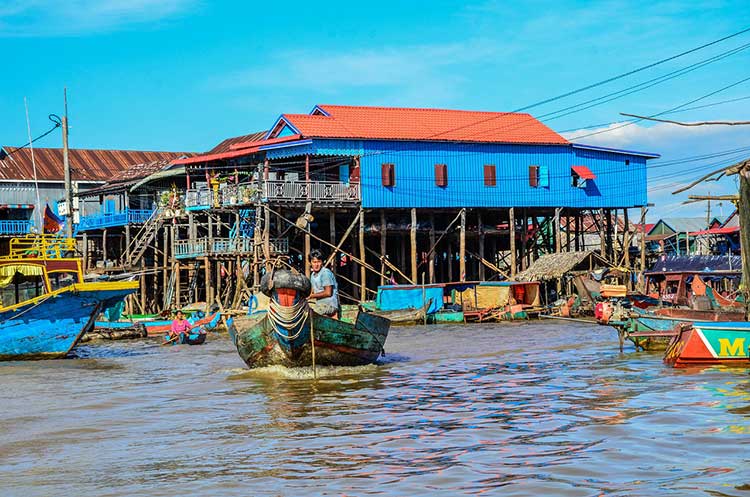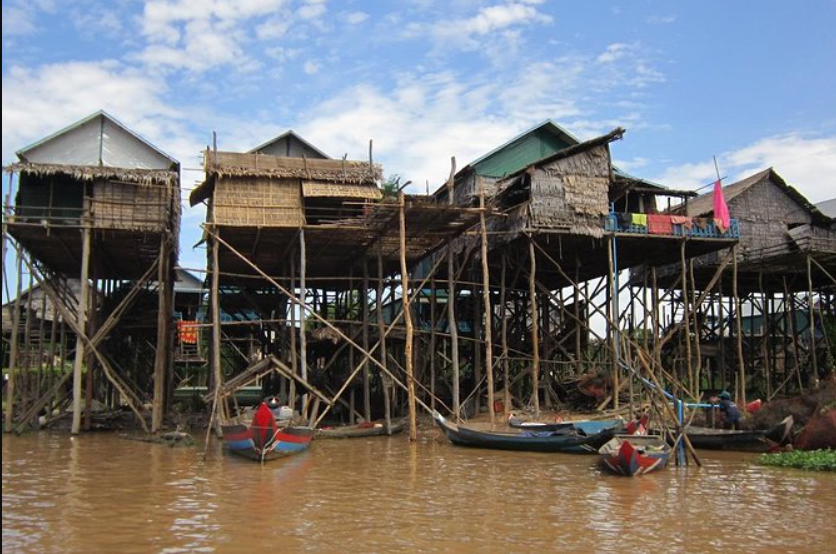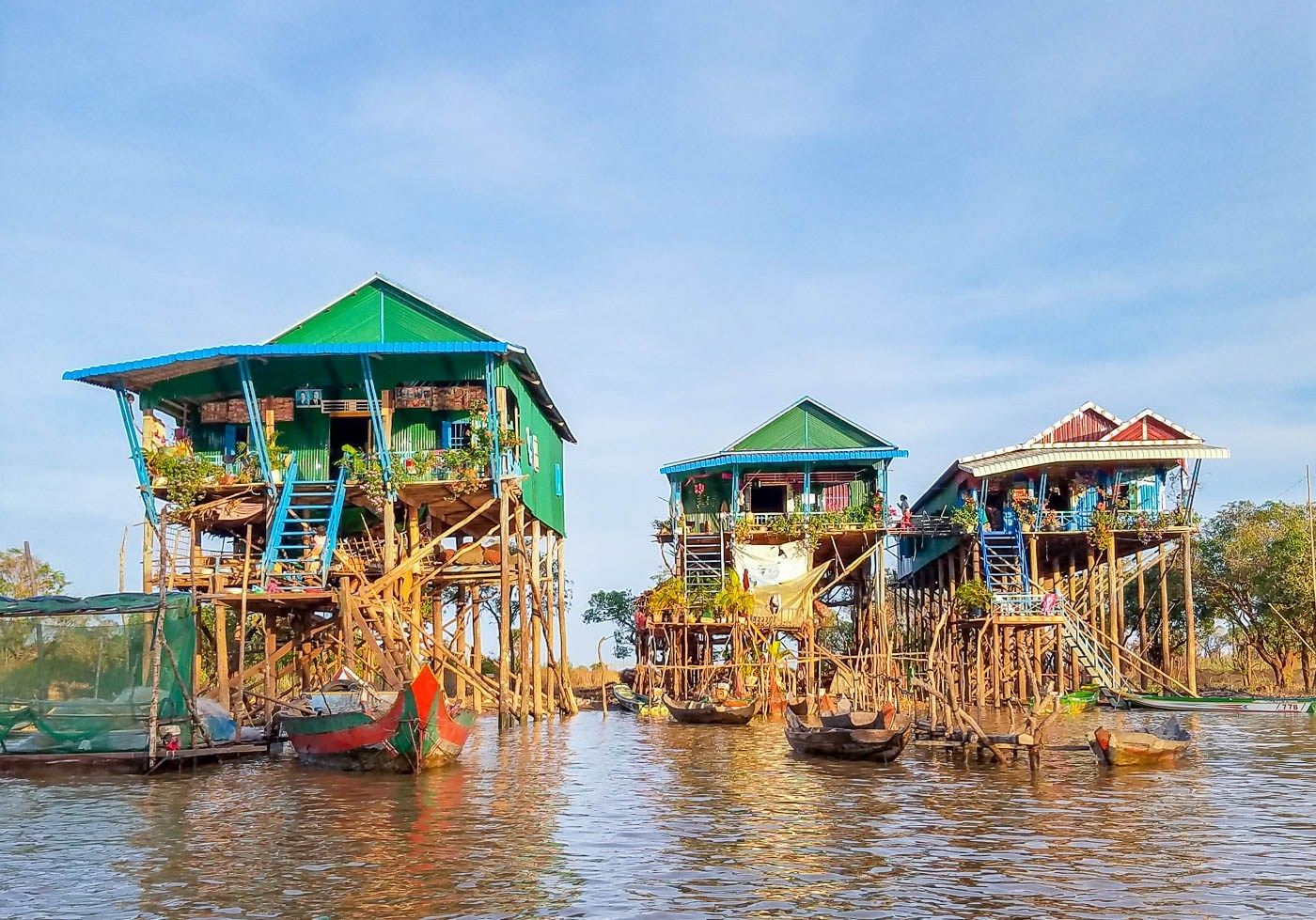Table of Contents

Introduction
Cambodia floating villages of Tonle Sap Lake are located in largest lake of the Asia. Imagine a world where houses, schools, and markets are not on solid ground but afloat on a vast lake. . This unique way of life is a testament to human adaptability and resourcefulness in the face of challenging environmental conditions. In this blog post, we’ll take you on a journey to explore the captivating world of Tonle Sap’s floating villages.
Tonle Sap Lake – Cambodia’s Beating Heart
Tonle Sap Lake is the largest freshwater lake in Southeast Asia, located in the heart of Cambodia. It’s a vital part of the country’s ecosystem and provides a livelihood for countless Cambodians. What makes it truly exceptional is the dramatic seasonal variation in its water levels.

The Floating Villages – A Way of Life
When the monsoon rains arrive, Tonle Sap Lake expands dramatically, inundating the surrounding floodplains and forests. During this time, many families abandon their land-based homes and move to the floating villages. The inhabitants here have adapted to life on the water, with stilted houses and boats serving as essential parts of their daily existence.
Kompong Khleang – A Notable Floating Village
One of the most prominent floating villages on Tonle Sap Lake is Kompong Khleang. Located about 45 kilometers from Siem Reap, it’s a community of about 20,000 people who live and work on the water. Here, you’ll find houses on tall stilts to stay above water during the rainy season and close to the surface during the dry season.

A Complex Ecosystem
The floating villages of Tonle Sap Lake are not just about human habitation. They coexist with a diverse ecosystem. The lake supports a rich variety of fish, birds, and other wildlife. This complex interplay of human and natural life is a sight to behold.
Challenges and Resilience
Living on the water poses many challenges. Periodic flooding, limited access to healthcare and education, and economic difficulties are a part of daily life. However, the people of Tonle Sap have displayed remarkable resilience, adapting to their environment and preserving their unique way of life.

Tourism and Sustainability
In recent years, the floating villages have attracted tourists who are curious about this distinctive lifestyle. While tourism can bring economic opportunities, it also presents challenges related to environmental sustainability and cultural preservation. Responsible tourism and support for local initiatives are essential for the long-term well-being of these communities.
Conclusion
The floating villages of Tonle Sap Lake offer a glimpse into a world that is as unique as it is resilient. The people who call these villages home have adapted to the ebb and flow of their environment, living in harmony with nature. As you explore these communities, you’ll find that they are not just floating on water; they are also floating through time, preserving traditions and ways of life that are unlike any other. Visiting Tonle Sap Lake is not just a journey; it’s an opportunity to witness the beauty of human adaptability and the enduring spirit of a remarkable culture.
